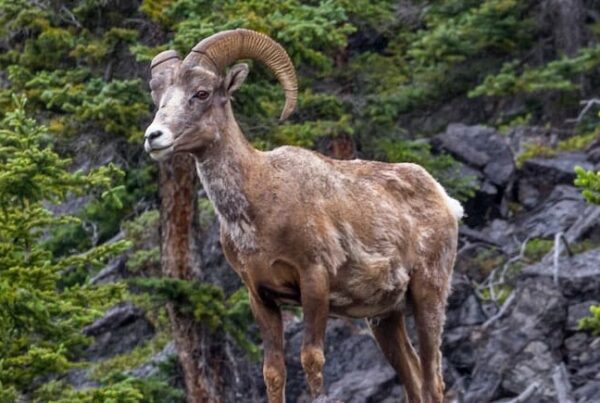The coming year will be critically important for Colorado’s wolf restoration program. Colorado Parks and Wildlife (CPW) and its Commission are charged with reintroducing wolves to the state, with paws on the ground by the end of 2023.
Opponents of wolf restoration claim that advocates want to “accelerate” this process, creating a plan that lacks adequate public input. Wolf advocates, on the other hand, are concerned that CPW is dragging its feet and won’t make the legally required 2023 deadline. These advocates are urging CPW to move quickly, but only with a process that provides robust public input.
1945
Year the last wild wolf in Colorado was killed.
Wolf restoration is a socially difficult issue and CPW needs to ensure that the planning process is transparent and provides opportunity for all interested parties to adequately express their views. But at the same time, the law created by the passage of Proposition 114 is clear and requires the reintroduction of wolves. The bottom line is that CPW needs to move efficiently to implement the will of the voters.
Colorado can easily create a cutting-edge, comprehensive wolf management plan before the end of 2022 that addresses the concerns and desires of the many individuals and organizations who have an interest in wolf management in Colorado.
The key question is how CPW will implement this plan. In order to establish a self-sustaining wolf population, it is crucial that the state ensures that everyone who is affected has their concerns heard and addressed.
In his January 13 remarks to the CPW Commission, Governor Polis noted it would be wise to complete the wolf reintroduction planning process well ahead of the December 31, 2023 deadline. In fact, Polis actually advocated for having some wolves reintroduced by late 2022 or early 2023.

This is the best course of action for several reasons. Wolves are most easily moved in groups of related individuals, and that’s best done in the late fall through the early spring, from November through March. Planning to complete the first reintroductions by March of 2023 would ensure that CPW meets the legal requirement of Proposition 114 and would also wisely allow for any problems that might prevent reintroduction before the fall of 2023. That’s just good planning.
Another important consideration is who will be involved in creating the reintroduction plan. CPW will create a Technical Working Group that includes personnel from various state and federal agencies, but there is no specific requirement for inclusion of scientists with experience in wolf biology and management. There are numerous biologists with wolf management experience who could help ensure that the best available science is used to develop Colorado’s plan, and they should be engaged in the process as soon as possible.
To further complicate the matter, the U.S. Fish and Wildlife Service (USFWS) removed the gray wolf from protection under the federal Endangered Species Act (ESA) on January 4, 2021. CPW has much more latitude in releasing gray wolves in Colorado if the species is not ESA listed, with no need to meet any federal requirements. But several groups filed suit immediately to reverse the USFWS decision, and the outcome of those challenges is unknown both in terms of the specific decision itself and when it will be made.
The result may be that the gray wolf in Colorado is again protected under the ESA. Given the uncertainties, it is prudent for CPW to consult with the USFWS to ensure that, in the event of federal re-listing of the gray wolf, CPW can meet the legal mandate of reintroduction by the end of 2023.
With all this in mind, SJCA has recommended several actions to the Governor, the Director of the Department of Natural Resources, the CPW Commission and CPW Staff, including:
- Finalize the reintroduction plan by fall of 2022
- Ensure comprehensive public involvement
- Use existing knowledge and information to inform decisions
- Include wolf biologists in the Technical Working Group
- Coordinate closely with the U.S. Fish and Wildlife Service
We’ll remain closely engaged with the planning process as CPW moves forward to ensure that wolves can come back home to Colorado.





If wolves are re-listed under the ESA, can any rule be added to allow Colorado some latitude in their re-introduction?
Angela:
Excellent question. CPW has been in discussions with the U.S. Fish and Wildlife Service regarding the possibility of some method for management flexibility. It’s a legally complex situation, some environmental groups are opposed to any such mechanism as it can reduce protections. It’s also complicated by the fact that it would most likely have to be in place BEFORE wolves are relisted, as there isn’t an existing way to do that for a species that isn’t currently protected by the ESA. But CPW is actively pursuing some method, details are scanty.